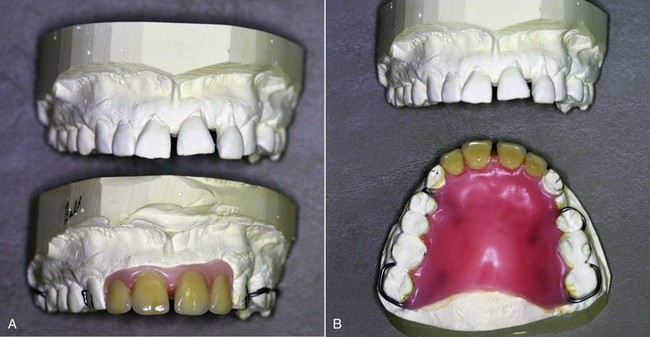CHAPTER 23 Interim Removable Partial Dentures
Interim prostheses may be indicated as a part of total treatment for the following:
Appearance
For the sake of appearance, an interim removable partial denture may replace one or more missing anterior teeth, or it may replace several teeth, both anterior and posterior. Such a restoration is usually made of resin, which may be produced by a sprinkling method, by the visible light-cured (VLC) method, or by waxing, flasking, and processing with autopolymerizing or heat polymerizing resin (Figure 23-1). It may be retained by circumferential wrought-wire clasps, Crozat-type clasps, interproximal spurs, or wire loops.
Space Maintenance
When a space results from recent extractions or traumatic loss of teeth, it is usually prudent to maintain the space while the tissue heals. In younger patients, the space should be maintained until the adjacent teeth have reached sufficient maturity to be used as abutments for fixed restorations, or so that an implant can be placed. In adult patients, maintenance of the space can prevent undesirable migration and extrusion of adjacent or opposing teeth until definitive treatment can be accomplished (Figure 23-2).
Stay updated, free dental videos. Join our Telegram channel

VIDEdental - Online dental courses




